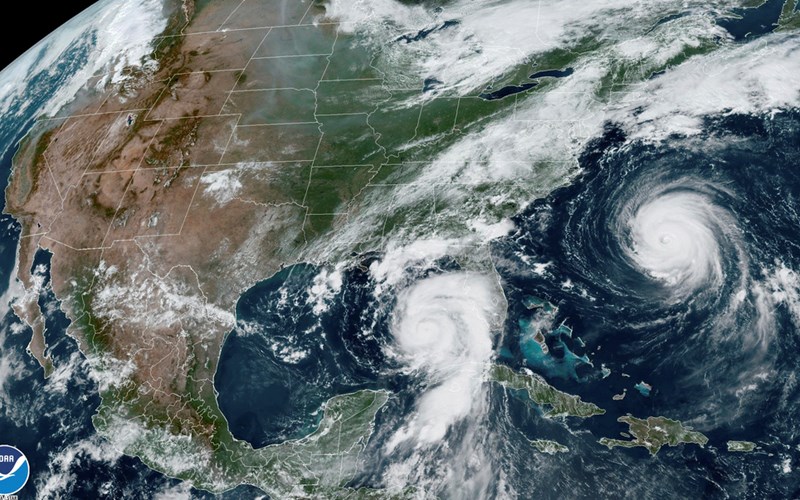They were hoping to find most properties vacated but in Coastal states leaving homes in the midst of dangerous storms is not an easy call.
Pets are a big part of the go or stay decision.
“People will not evacuate if they can’t take their animals with them,” Jim Patronis, the state of Florida’s CFO and chief fire marshal, said on American Family Radio Wednesday. “We have had to go and create more diversity to our shelters in order to make them where people say, ‘You know what? It's time to take the dogs, and let’s go. We'll evacuate. That’s one way we have tried to appeal to people to err on the side of safety.”
Florida shelters filled up with stray pets after Hurricane Ian blew through Fort Myers, Florida last September. There were happy endings for some owners and pets, but many other pets were not found.
“Animals always suffer in these kinds of things,” Liz McCauley, executive director of Cape Coral Animal Shelter, told the Fort Myers News-Press. “It’s just difficult.”
Some terrified pets just flee. Others are let go by families whose homes have been damaged and feel they can no longer adequately care for pets, the News-Press reported.
“One thing we’ve learned is that we have to open up enormous amounts of special needs shelters, and sometimes those shelters are pet shelters,” Patronis told show host Jenna Ellis, who lives in Florida in the storm's path.
Sometimes the greater challenge is getting weather-hardened people to a shelter at all.
Hurricane communities are different from tornado-vulnerable regions in the sense that warning comes days in advance.
People can see a number attached to the approaching storm and often make decisions based on a Category 1 or 2 storm as opposed to a 3, 4 or 5.
Idalia strengthened to a Category 4 storm while still in the Gulf of Mexico but made landfall as a Category 3.
Katrina also made landfall as a 3 causing New Orleans levees to give way. There was widespread flooding, and ultimately 1,577 fatalities in Louisiana were attributed directly or indirectly to the storm.
Residents watch the storm ‘number’
“This part of the state hasn't seen a storm in a long time," Patronis advised. "They have been familiar with Category 1's or Category 2's and say, ‘You know what, I can weather the storm. People don't want to leave their stuff. It frustrates me because I tell people all the time, ‘I can replace your stuff, but I can't replace you.’
“I can tell you, the people of Fort Myers Beach will not stay if another hurricane threatens them. The people of Mexico Beach, they will not stay if another hurricane threatens them, simply because you can't take the risk. Unfortunately, this part of the state hasn't experienced a storm in a long time,” Patronus said.
One big difference between the Big Bend of Florida and Fort Myers is density of population. The Bend, north and west of Tampa, is among the state’s least-developed areas.
“The area of impact in Taylor County … Taylor County's got about 22,000 people. When you compare it to (Hurricane Ian), there's 22,000 people just on Fort Myers Beach. So again, the, the population density between those two markets, there's less lives impacted by where this storm is making landfall,” Patronos said.
That also means less damage to property and fewer insurance claims are expected.
“The recovery financially in affected areas is going to have less of an economic impact on the state. Fort Myers … Hurricane Ian was the most expensive hurricane in the history of the state of Florida,” the CFO advised.
Responders were ready to go the night before
Idalia’s silver lining doesn’t mean rescue and recovery efforts were given less attention.
First responders used the Orange County Convention Center as a staging area Tuesday night, filling its massive exhibition halls with boats, ambulances, heavy equipment and more.
Several national teams from FEMA joined state teams there. Trauma surgeons and structural engineers are embedded. Dog units have also been deployed and will play a big part in the process, Patronus said.
“You've got to be able to make sure the building is safe to enter," Patronis explained. "They also have 54 canines with them. The dogs are an amazing resource because of their ability to detect life, and that tells our urban search and rescue guys exactly where to go.”







